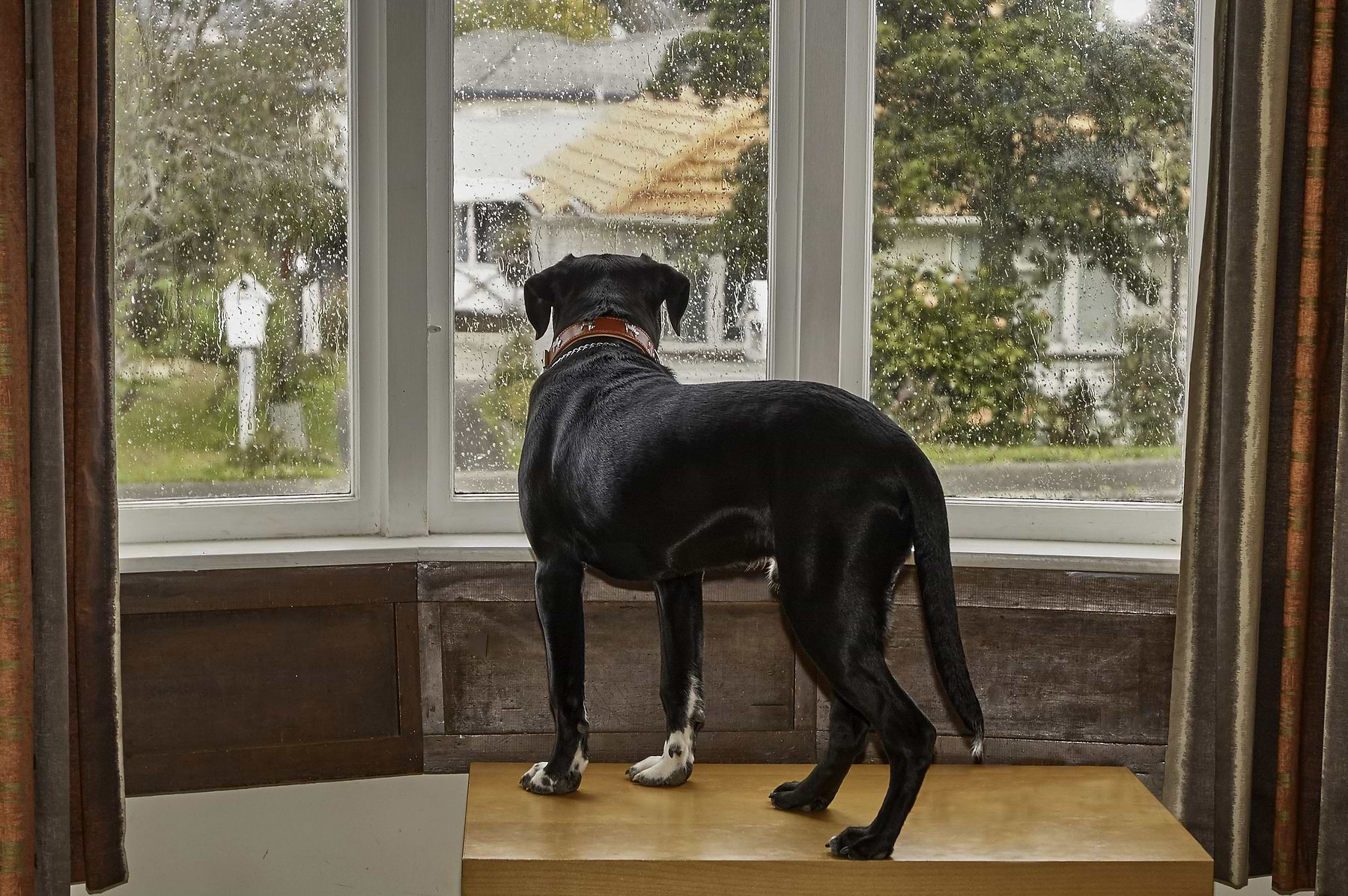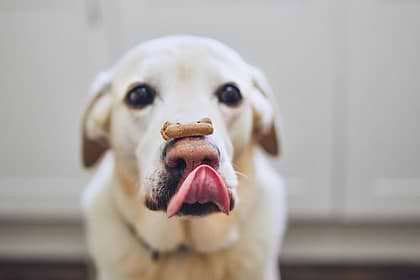Our dogs are just like humans in many ways—they’re social creatures, for example, and take a lot of joy out of being able to hang out with us, their loving pet parents. But sometimes, this social instinct can go a little too far and lead to a condition called canine separation anxiety.
Canine separation anxiety is when your dog experiences distress when you leave the home or leave them alone, especially in a strange place. Although this is normal behavior, it's uncomfortable for both your dog and you and can lead to some destructive behavior problems, like destructive chewing or going to the bathroom in the house.
To solve this, we'll break down separation anxiety in dogs and go over some ways you can prevent it from occurring. We'll also explore some training methods you can use to help treat separation anxiety if your dog is already showcasing its symptoms.
Separation Anxiety in Dogs Explained
Dog separation anxiety is very similar to separation anxiety in humans. At its core, separation anxiety is just anxiety derived from being separated from loved ones or providers—in this case, dogs feel anxiety when they are separated from us, the pet parents.
Although commonly associated with puppies, separation anxiety is very common in canines overall. Between 13% and 18% of dogs show at least some signs of separation anxiety, and it usually affects between 20% and 40% of all canines referred to behavioral specialists.
For dogs, separation anxiety is derived from the stress response that your dog or puppy feels when their instinct to stay with their “pack” is interrupted. For example, if your puppy gets used to having you around because of the pandemic, then you start to leave for work once your office is reopened, they might feel stressed out or anxious because they don’t know why you have left them alone.
Separation anxiety in dogs normally kicks in when dogs can’t see their pet parents, even if they can smell or hear them. It’s also not typically affected by location; your dog might feel separation anxiety if they are separated from you at home, at the home of a family member, or even at the park.
Although separation anxiety is a normal stress response, it’s also unproductive and your dog has to learn that their parent’s absence is okay. By overcoming separation anxiety, your dog can learn that they’ll trust you’ll return whatever you leave them for a chore, errand, or simply some time with other humans!
What Are the Signs of Separation Anxiety in Dogs?
Many of the classic signs of separation anxiety in dogs are problematic or destructive. After all, your pup gets stressed out, so they try to work out that stress as best as they can!
In many dogs, separation anxiety is associated with higher levels of cortisol, a common stress response hormone. When this occurs, a dog’s behavior may showcase signs of separation anxiety by:
- Tearing up clothes, furniture, or anything else they can get their mouths on
- Clawing or digging into carpet or couches
- Running around like they’re scared
- Hiding inside closets
- Barking or howling, especially as you first leave the home
- Trying to destroy their crate, even if they love their crate otherwise
- Chewing at window blinds and coverings
- Urinating or defecating
- Drooling excessively
- Breathing heavily
- Trying to break out of the crate or house
Some studies have found that the most common behaviors related to separation anxiety include home destruction, inappropriate elimination, and excessive vocalization. However, even if your dog doesn’t showcase these specific behaviors, they might still show signs of separation anxiety in other ways. It’s up to you to analyze your pup’s behavior and determine if they are really doing okay or if they have a mild panic attack each time you walk out the front door.
Ultimately, none of these behaviors are desirable, so pet parents need to know how to both prevent and treat separation anxiety and their pups if they already showcase these responses.
What Causes Dogs To Experience Separation Anxiety?
Some dog breeds may be more or less susceptible to separation anxiety, especially depending on how they are treated as puppies. But no matter the breed, separation anxiety is triggered by a few common factors, including:
- Genetic predisposition, which is, of course, related to your dog’s breed and gender, as male dogs may be more predisposed than female dogs
- The nature of your relationship to your pup. If your puppy sees you as their primary caregiver and you go away, the odds of a separation anxiety response become higher
- What age you adopted your puppy—if they were still bonding with their parents or siblings before adoption, they may transfer that very young, immature bond to you
- Prolonged contact or presence. For instance, the COVID-19 pandemic caused many dogs to expect their pet parents to remain home forever. When those parents returned to work, many dogs experienced separation anxiety, resulting in a current uptick
- How you raise your puppy. If a parent doesn’t raise their puppy with a healthy understanding of boundaries and without showing them that they will leave and return, that puppy could grow up into a dog with a severe case of separation anxiety
No matter the root cause, however, separation anxiety is certainly treatable.
COVID-19 Separation Anxiety
As noted above, the COVID-19 pandemic has recently caused an uptick in separation anxiety symptoms among dogs. Simply put, lots of pet parents stayed home much more frequently than normal. Our cuddly canine companions loved this and started to expect it.
But since many pet parents have gone back to work and resumed leaving the house periodically, many dogs are now experiencing severe cases of separation anxiety during their parent’s departure. Because they don’t understand why the schedule of their days has changed so much, they are responding in predictable, if unfortunate, ways.
This is doubly problematic because many pet parents didn’t bother to prevent their dogs from developing separation anxiety during the pandemic. This is probably because they didn’t know they needed to look for it!
If your adult dog is showcasing the signs of COVID-19-related separation anxiety, no need to worry. We’ll explain how you can treat separation anxiety in your pup even if they are an adult later in this breakdown.
Preventing Separation Anxiety in Dogs
While treating separation anxiety is certainly possible, it’s always better to prevent your puppy from experiencing the panic and anxiety associated with this if you can. As with all canine behaviors, the best place to start is when your dog is still a young puppy.
Ideally, you'll try to train them appropriately so that they never develop the symptoms of separation anxiety in the first place. Note, however, that it may not be fully possible to stop your dog from feeling anxious when you leave, especially if they are a breed that forms very strong attachments to their parents.
Create Solid Boundaries
One of the best ways to prevent separation anxiety and promote calm in puppies is to create firm boundaries when you are at home. Just like human kids, dogs expect and thrive on predictability and structure through a standard daily routine.
So, how can you create good boundaries? Organize your dog’s day into two types of time: interactive time and noninteractive time. In other words, choose when your dog gets attention and interactions with you or any other pet parents in the house. This time can include walk time, playtime, cuddle time, training time, and so on.
The other section of time includes any periods where you aren’t directly interacting with your pup. During these times, your dog needs to be relaxing or in its crate (or both). Your dog’s crate, of course, is their friend in this effort, as it’s a place where they will feel safe and secure.
So, you should ideally separate yourself from your puppy several times per day so they get used to the behavior. Naturally, your puppy might feel a little distressed or shocked the first time this occurs. But gradually, they’ll learn that you always return and that you always give them plenty of playtime and interactivity sooner or later.
You should resist the urge to give your adorable, cuddly puppy nonstop attention, especially if they constantly beg for it by pawing at your legs, biting, or doing other undesirable behaviors. Giving your dog attention just rewards those behaviors and makes them more dependent on constant, 24/7 attention from you or other humans.
Use Crate Training
As noted above, crate training is your ally when teaching your dog to expect and deal with alone time. Your dog’s crate should have a comfortable bed, have plenty of room for them to move around, and even be associated with treats or toys, like our Groov Training Aid, so they don’t dread being crated.
Your dog’s crate is their sanctuary from the outside world. When you place your dog in their crate, they should expect that you’ll come back and let them out when it is appropriate.
You can use crate training by associating the crate with positive stimuli like treats, toys, or puzzles. When you do this, your dog may still feel some of the instinctual anxiety at your departure, but they will settle down and be comfortable in their crate for the duration of your absence.
Crate training, additionally, prevents your dog from showcasing the other signs of separation anxiety, like tearing up furniture, defecating, or causing other havoc throughout the house.
On top of that, crate training does wonders for your dog’s mental health and emotional maturity. Once your dog is crate trained and isn’t as vulnerable to separation anxiety, you might find that other aspects of their lives in behavior improve. They might obey commands more easily, they might seem happier and more pleased when they see you instead of overexcited, and you might even see improvements with potty training.
Bottom line: crate training is fantastic if you want to prevent your dog from developing separation anxiety.
Provide Benefits When You Leave
Lastly, you may be able to help prevent separation anxiety in your puppy by giving them an incentive to look forward to whenever you leave. Find a special type of treat that your dog doesn’t get for anything else, including good behavior or tricks, and give it to them when you leave. Peanut butter is a great option.
When done properly, your dog may even start to look forward to your departure since they’ll associate that with treat time! To sweeten the deal, consider giving them another treat when you return… but only if they’ve been good.
Training Through Separation Anxiety
What if your dog already has separation anxiety? In that case, you can help teach them not to worry so much when you leave the house through some training techniques.
You should, of course, also use the same crate training tips mentioned above. Make sure that your dog thinks of their crate as a secure, enjoyable place where they can relax. Your separation anxiety training will go much smoother if you can manage this.
Start With Small Separations
If your dog has severe separation anxiety, begin with small separations for short bursts of time. For example, leave them in their crate for 15 minutes, 30 minutes, or an hour. Ignore any whining or attempts at attention no matter how cute they sound—giving them attention when they whine just rewards the behavior.
You can gradually increase the time your pup spends isolated from you up to a few hours. Past this point, your dog doesn’t notice much of a difference between timeframes aside from longer spans, like an entire day (in which case your dog should be boarded or babysat, anyway).
The small separations teach your dog that they can endure longer and longer chunks of time away from you and everything will still be okay. Be sure to reward your dog with a treat when you return.
Give Your Pup Plenty of Exercise
Exercise can also help a number of dog breeds who are naturally very energetic, particularly if your dog is still young or in its puppy phase. Tired and contented dogs who have had playtime or a brisk walk are much more likely to settle down if you leave since they’ll be sleepy and willing to take a nap.
On the flip side, if your puppy doesn't get enough exercise, you shouldn't be surprised if they bounce off the walls when you leave. They have to get that energy out somehow!
Physical exercise is important, but so is mental exercise. Be sure to give your puppy and adult dogs puzzle toys or cognitive games to entertain and amuse them. By the time they finish the puzzle, they may be content to simply settle down and go to sleep.
Use Special Treats
Lastly, you can use the same trick described above when teaching a puppy not to develop separation anxiety. Get a special type of treat that you don’t use for anything else and reward your dog when they behave properly and when you leave them for a while.
In this way, you associate positive deliciousness with your departure and teach your dog that they don’t have to worry about when you head out the door. In fact, it’s something nice for them since they’ll get a treat they don’t get for doing anything else, even behaving properly or doing a special trick.
Summary
All in all, separation anxiety in dogs is very common and it’s not fully possible to magically make your dog understand that you’ll be back and everything is okay if you leave. But with the right training and treatment of separation anxiety, you can teach your dog not to worry so much when you leave the house or leave them alone.
In this way, both dog and pet parents can feel comfortable and safe when the parents leave the home for an outing or errand. If you want to get your dog started on the right path, you’ll need a comfortable crate and a training tool or two.
That’s where Diggs comes in. Our Revol Crate is designed from start to finish to be comfortable and safe for dogs of any size and it can be fitted with specialized training or treat tools like our Groov Training Aid. Both of these dog care solutions are made with durable, non-toxic materials and intended to help you give your dog the best life possible. Check them out and our other dog care solutions today!
Sources:
Separation Anxiety | ASPCA.org
Separation Anxiety in Dogs: How to Help a Puppy With Separation Anxiety | American Kennel Company
(PDF) Risk factors and behaviors associated with separation anxiety in dogs | Research Gate
Separation anxiety and the “pandemic puppy”: What lies ahead after lockdown | AAHA.org

The Diggs Team
We believe our dogs deserve safer, better designed pet products.
You might also like
Crate training tips, stories and inspiration
View all blogsIn Your Diggs
Share your photos with #DiggsPet and tag us @DiggsPet on IG and TikTok.



